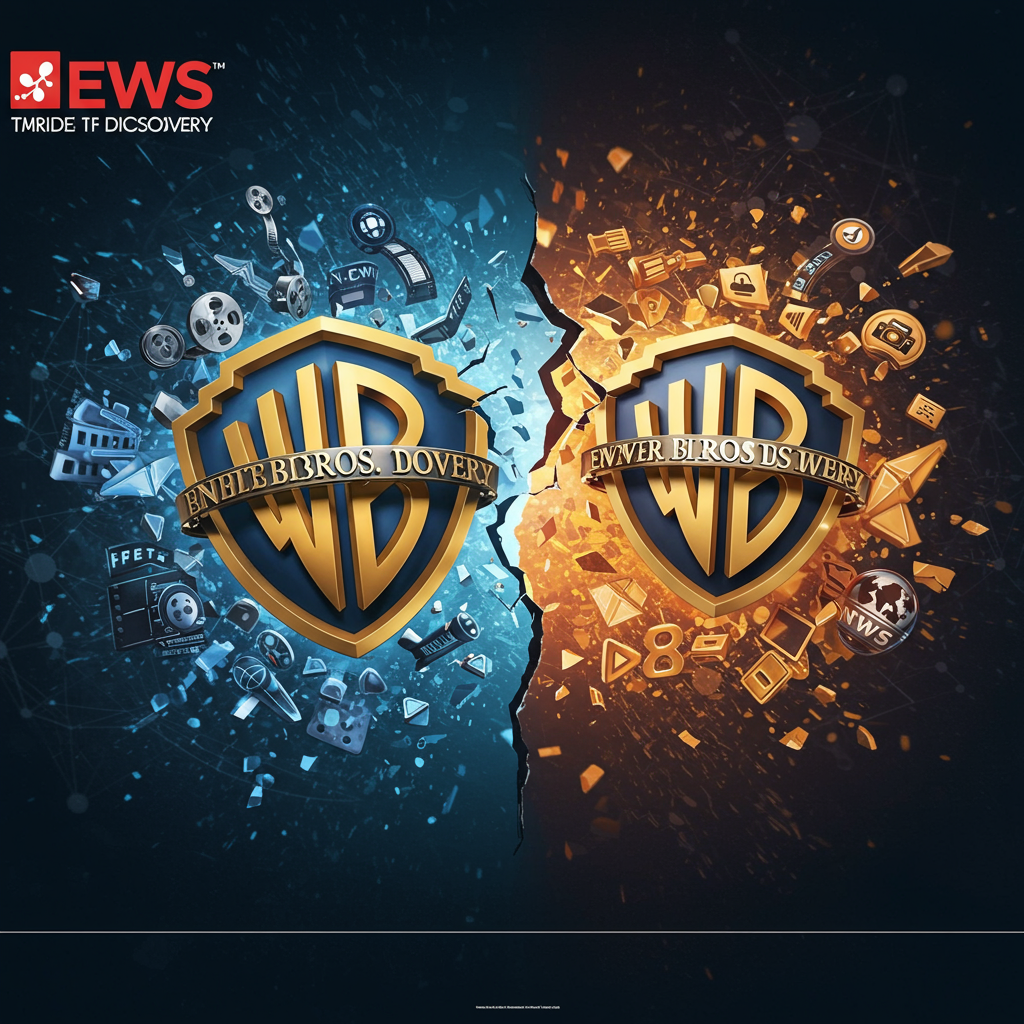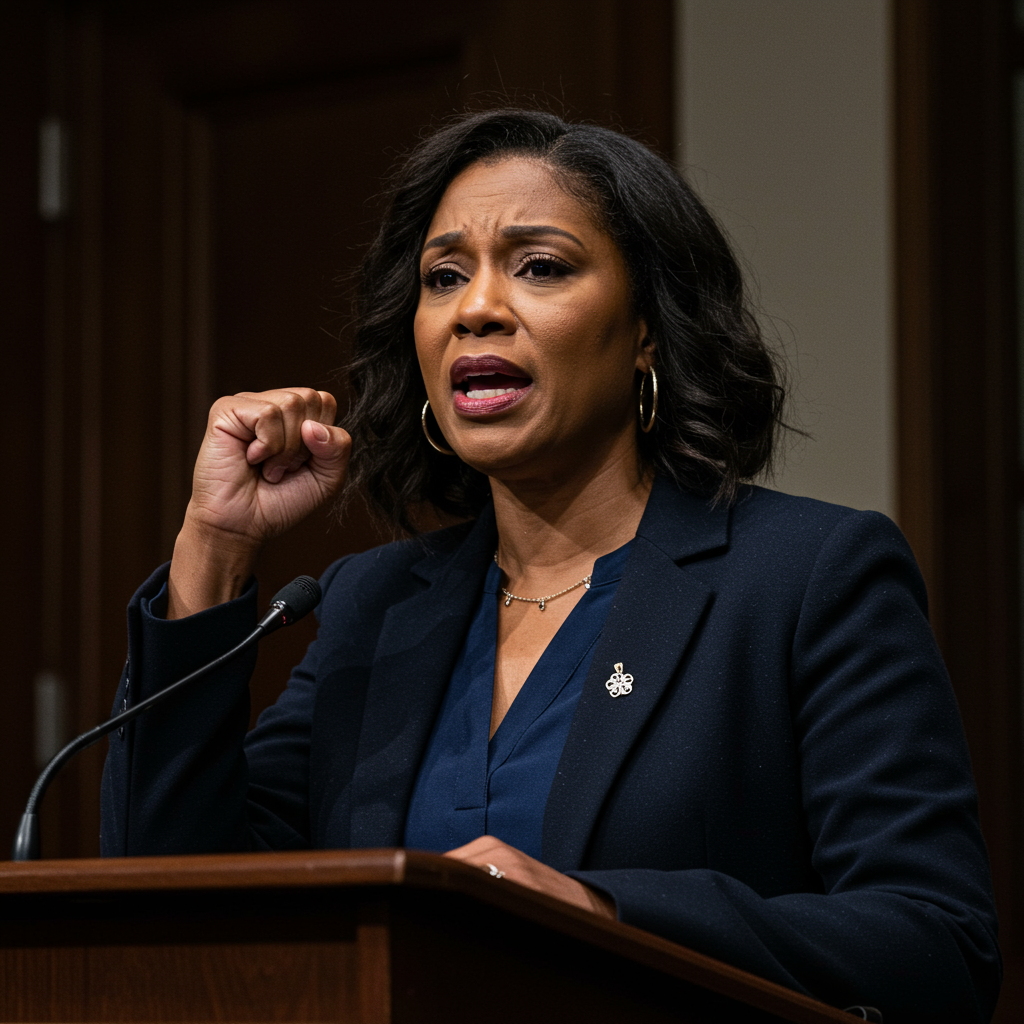Warner Bros. Discovery (WBD) is embarking on a monumental corporate restructuring, set to divide its vast media empire into two distinct, publicly traded entities. This strategic maneuver, announced on July 28, 2025, will see the entertainment giant separate its premium content studios and streaming operations from its extensive portfolio of global television networks. The highly anticipated spin-off, expected to finalize by mid-2026, aims to sharpen focus, reduce debt, and unlock substantial shareholder value in a rapidly evolving digital landscape.
A Bold Corporate Reimagining Takes Shape
The impending split marks a significant pivot for WBD, which was formed in 2022 from the merger of WarnerMedia and Discovery Inc. This upcoming separation will essentially revert to a structure somewhat reminiscent of the pre-merger arrangement, creating two independent companies named “Warner Bros.” and “Discovery Global.” This move acknowledges the fundamental differences in business models and growth trajectories between high-budget content creation and traditional linear broadcasting. It signals a new era for how this prominent media conglomerate intends to navigate consumer shifts from cable to streaming.
The Two New Powerhouses: Warner Bros.
The “Warner Bros.” company is designed to honor over a century of iconic storytelling and will encompass WBD’s powerhouse streaming and studio assets. This new entity will proudly house the venerable Warner Bros. Television and Motion Picture Groups, alongside the creative juggernaut DC Studios. Core to its mission will be premium content platforms like HBO and the flagship Max streaming service. The extensive film and television libraries, coupled with Warner Bros. Gaming Studios, will solidify its position as a global content creation leader. David Zaslav, currently the President and CEO of Warner Bros. Discovery, will transition to lead this newly focused entity as its President and CEO. His leadership signals a strong commitment to maximizing the value of WBD’s most prestigious intellectual properties.
The Two New Powerhouses: Discovery Global
Conversely, “Discovery Global” is poised to manage WBD’s immense worldwide networks business. This new company, led by current WBD CFO Gunnar Wiedenfels as President and CEO, will leverage the global affinity and value of the Discovery name in entertainment, news, and sports. Its comprehensive portfolio includes universally recognized brands such as CNN, TNT Sports in the U.S., the Discovery Channel, HGTV, Food Network, and a multitude of free-to-air channels across Europe. Digital products like the popular Discovery+ streaming service and Bleacher Report will also fall under its purview. This division boasts an impressive global reach, serving 1.1 billion unique viewers across 200 countries and territories in 68 local languages.
Strategic Rationale Behind the Split
The decision to divide WBD comes just three years after its formation, which some industry analysts have retrospectively termed a “misfire.” The original merger, championed by David Zaslav, aimed to consolidate assets but left the combined entity burdened with over $40 billion in debt. Wall Street often reacted negatively to the fusion of prestigious brands like HBO with a vast array of basic cable channels, complicating investor evaluation. The widespread, rapid consumer migration from traditional cable to streaming exacerbated these challenges, impacting the profitability of linear networks.
This Warner Bros. Discovery split is a strategic unbundling, addressing the fundamentally different capital requirements and growth strategies of content creation versus traditional broadcasting. By separating, each company can pursue a tailored operational plan without internal competition for resources. This move aims to provide investors with clearer visibility into the performance metrics appropriate for each business model, potentially unlocking significant shareholder value that was previously obscured by the conglomerate structure. It’s a pragmatic response to market pressures and the need for greater agility.
Unpacking the Warner Bros. Mandate
Under David Zaslav’s leadership, the new Warner Bros. entity will concentrate on delivering “culture-defining stories, characters and entertainment” globally. The executive team for this content-focused powerhouse is already robust. Pam Abdy and Mike De Luca will serve as co-CEOs of Warner Bros. Motion Picture Group, while James Gunn and Peter Safran will co-chair DC Studios, tasked with revitalizing its cinematic universe. Casey Bloys remains Chairman and CEO of HBO and HBO Max, a testament to the brand’s premium standing. Channing Dungey will lead the Warner Bros. TV Group, and JB Perrette will oversee Streaming and Games. Critical appointments include Bruce Campbell as COO, Robert Gibbs as Chief Communications Officer, and Priya Aiyar as Chief Legal Officer. The company is actively seeking a Chief Financial Officer and a Chief People & Culture Officer. This specialized leadership structure is designed to foster creative excellence and maximize streaming growth.
The Vision for Discovery Global
Gunnar Wiedenfels expressed strong enthusiasm for Discovery Global’s future, highlighting its “leading portfolio of beloved brands and programming” and its expansive global footprint. His mandate includes focusing on operational efficiency and financial discipline for the established networks business. The leadership team for Discovery Global includes Gerhard Zeiler as President for U.S., U.K., & Germany, Discovery+, and Chief Content Officer. Mark Thompson will lead CNN Worldwide, and Luis Silberwasser will head TNT Sports. Other key executives include Fraser Woodford (CFO), David Duvall (CTO), and Amy Girdwood (Chief People & Culture Officer). The company is currently recruiting for a Chief Communications and Public Affairs Officer. This team is tasked with optimizing revenue from linear channels while continuing to grow digital offerings like Discovery+.
A New Era for Media Conglomerates
The WBD split reflects a broader trend within the media industry. Major conglomerates are increasingly evaluating their diversified portfolios in light of shifting consumer habits. Comcast’s NBCUniversal, for instance, is also spinning off most of its cable networks into a new entity named Versant. This strategic unbundling allows companies to divest from segments perceived as less growth-oriented, focusing capital and management attention on core strengths. For Warner Bros., this means doubling down on its unparalleled library of intellectual property and its premium streaming services. For Discovery Global, it signifies a commitment to optimizing its vast network presence and leveraging its global reach.
Financial Restructuring and Market Signals
Beyond strategic focus, the split is a critical component of WBD’s financial restructuring. The previous merger left a substantial debt load, which this separation aims to address by creating more financially transparent and independently viable entities. Investors typically prefer clear, focused business models, and the distinct separation could lead to higher valuations for each company, as their performance can be assessed on metrics appropriate for their respective operations. While there’s speculation about the potential for future independent acquisitions, no such plans have been announced. This move underscores a proactive approach to corporate governance, designed to reassure markets and drive long-term value creation.
Frequently Asked Questions
What are the core businesses of the new Warner Bros. and Discovery Global companies?
The new “Warner Bros.” company will focus on premium content, encompassing Warner Bros. Television, Warner Bros. Motion Picture Group, DC Studios, HBO, and the Max streaming service, along with Warner Bros. Gaming Studios and their vast content libraries. “Discovery Global” will manage the company’s worldwide network portfolio, including popular channels like CNN, TNT Sports, Discovery Channel, HGTV, Food Network, and the Discovery+ streaming service, serving audiences across Europe and globally.
Why is Warner Bros. Discovery splitting into two separate entities?
The split is a strategic response to evolving consumer viewing habits and the financial complexities of the original merger. The 2022 merger left WBD with significant debt, and the convergence of traditional cable with streaming proved challenging. By separating, each new company can focus on its distinct business model – high-growth content creation and streaming for Warner Bros., and efficient management of global linear networks for Discovery Global. This aims to unlock shareholder value and provide clearer financial transparency.
When will the Warner Bros. Discovery split finalize, and how might it impact streaming services like Max and Discovery+?
The separation of Warner Bros. Discovery into two independent companies is expected to be finalized by mid-2026. After the split, Max (HBO Max renamed in 2023) will remain part of the new “Warner Bros.” entity, solidifying its position as a premium streaming service for scripted content and films. Discovery+ will be housed under “Discovery Global,” continuing to offer its extensive library of unscripted and factual content. While their precise integration post-split is yet to be fully detailed, there’s no inherent limitation preventing them from maintaining their current or similar operational models, potentially continuing cross-promotions or bundles where strategic.
This Warner Bros. Discovery split represents a decisive step to reshape its future in the dynamic media landscape. By creating two specialized powerhouses, the company aims to optimize its operations, serve distinct market segments more effectively, and ultimately drive sustainable growth for decades to come. The industry will closely watch how this ambitious restructuring impacts content strategy, subscriber growth, and financial performance across the two new independent media giants.


